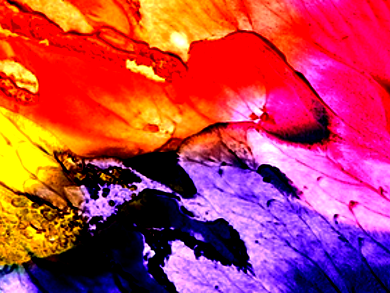Nanostructure-based light−matter interaction produces vivid and vibrant colors. Nanostructure-based light−matter interaction relies on controlling the geometric parameters of nanostructures. This is called extrinsic structural color. Plasmonic color printing outperforms traditional pigment- or dye-based color printing in their ultrahigh subwavelength resolution, huge optical data storage, and ultracompact size. Color contrast can be improved over the whole visible spectrum by using all-dielectric materials. However, most color nanoprintings work in a static way. This limits their advanced applications, such as anti-counterfeiting, dynamic full-color display, and highly secure encryption.
Recently, a concept similar to electrical doping and chemical doping has been successfully used to control color nanoprintings in a dynamic way, such as by infiltrating liquid crystals into plasmonic nanostructures or controlling the hydrogenation/dehydrogenation kinetics of metal nanoparticles. However, none of them can be controlled in situ, and a hydrogen/oxygen environment is even required in the latter method.
Cheng-Wei Qiu, National University of Singapore, Qinghai Song and Shumin Xiao, Harbin Institute of Technology, Shenzhen, and Shanxi Universita, Taiyuan, both China, and colleagues have experimentally demonstrated an in situ dynamic color display. The team photonically doped a type of semiconductors, namely methylammonium lead halide perovskite gratings (MAPbX3 with MA = CH3NH3+ and X = Cl, Br, I, or their mixture). The team used an interplay of extrinsic structural color and intrinsic emission color, e.g., photoluminescence (PL) from active materials. The presented color could be tuned over a large color gamut by modifying the emission intensity, which is dependent on the external pumping light density and can be simply controlled. The color gamut can be further enlarged by varying the stoichiometry of MAPbX3. By controlling the pumping light, the synergy between interlaced mechanisms allows color tuning over a large range with a transition time on the nanosecond scale in a nonvacuum environment.
The design principle can be readily extended to other materials such as GaN, ZnO, and CdS. According to the researchers, their design is a promising realization of in situ dynamic color nanoprinting which will empower the advances in structural color, classified nanoprinting, augmented reality devices, and biosensing.
- Lead Halide Perovskite Nanostructures for Dynamic Color Display,
Yisheng Gao, Can Huang, Chenglong Hao, Shang Sun, Lei Zhang, Chen Zhang, Zonghui Duan, Kaiyang Wang, Zhongwei Jin, Nan Zhang, Alexander V. Kildishev, Cheng-Wei Qiu, Qinghai Song, Shumin Xiao,
ACS Nano 2018.
https://doi.org/10.1021/acsnano8b02425

